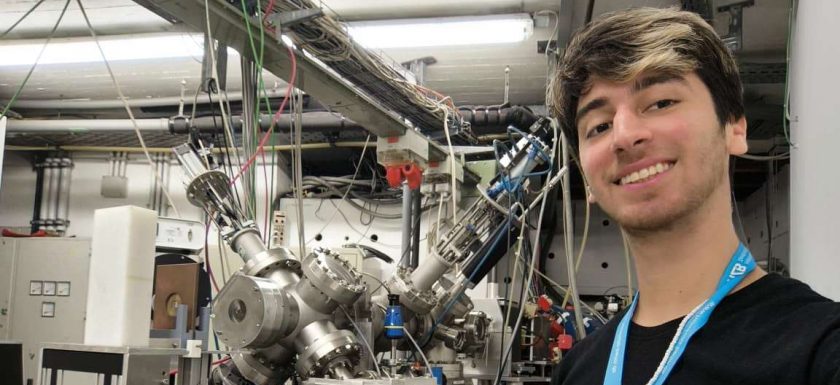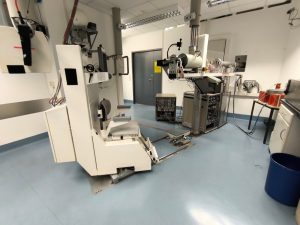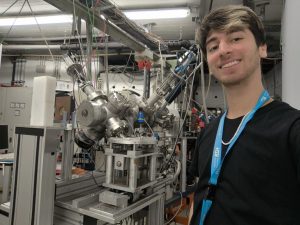
By summerstudent Axel Mena >
The first time I heard the word proton therapy was on a Late-Night Show with Cecilia Bolocco, the only Chilean to win the Miss Universe pageant in Chile. She’s a celebrity in our country, although I genuinely couldn’t care less about the showbiz world, that time I was captivated. She was talking about the terrible cancer her son suffered from. His cancer was so severe that no oncologist in our country offered a good prognosis. It seemed all was lost, until one day she heard about an innovative technique using protons to treat this type of cancer in the United States, called protontherapy. So, she traveled to the US, and fortunately, the treatment was a complete success. From that day on, Cecilia founded a foundation to help people in Chile access cancer treatments and with the goal, one day, to build a protontherapy center in Chile.
Physics, Medicine, and Protons for Cancer
What’s so special about protons for cancer treatment? Well, it all boils down to one concept: the Bragg Peak. Let’s explain by a metaphor: If you rush out of the house, you’ll be running at full speed and not caring about anything around you. On the other hand, if you go out leisurely, you’ll go slowly and notice what’s happening around you. Protons are the same: when they leave the accelerator, they have extremely high speeds, and interact with almost nothing. But as they advance, they lose energy, slow down, and begin to interact with their environment. By modifying the initial energy of the protons, and knowing the material they will pass through, we can calculate at what depth they will begin to interact. That’s the so called “Bragg Peak”, the key to proton therapy. By knowing the location and form of the tumor, we can adjust the proton’s energy so that all healthy tissue prior to the tumor remains safe and only the tumor is attacked. This advantage is unique to protons or heavy ions, and is especially useful for brain, eye, neck, and childhood cancer
5,000 patients
At HZB, in collaboration with Charité Hospital, patients with melanoma cancer on the eye are treated. The success rate is nearly 99%, in many cases even preserving their sight. During my stay, I was able to witness the treatment procedure from start to end.

A week before, patients come for the positioning procedure. The patient must sit in an special chair and use a mask to secure his head. The position of the chair is adjusted according to the treatment planning, the position of the eye and the comfort of the patient. It’s a semi-automated process; the manual part is performed by a medical physicist with the aid of X-rays and three tantalum points inserted into the eye of the patient. One of the medical physicists told me that this procedure also helps patients release stress and anxiety for the day of treatment. That caught my attention; not all is about the technique, we are also humans.
The following week, treatment begins for four consecutive days. In the morning, around 7:30, a quality check must be performed on each piece of equipment. It must be done quickly; patients will arrive in another hour. Upon arrival, the patients are positioned in the treatment chair, replicating the same conditions as the previous week. Proton irradiation lasts only about 30 seconds. Super fast. On the fourth day of treatment, patients leave the room incredibly happy and grateful. One even brought wine as a gift. On the last day I was observing this entire process, they treated the 5,000th patient.
And what am I doing here?

In parallel with the treatments, HZB has various testing stations for experimentation with new techniques. My work consists of improving the homogeneity of the proton beam using aluminum plates and studying how the position and width of these plates change the beam’s properties. Furthermore, since the time to use the proton beam is very limited, my second task was to simulate the proton beam, so that future experiments can be carried out without having to use the real beam.
An opportunity for Latin America
There is currently no proton therapy center in Latin America. However, construction of one recently began in Argentina. The main problem is the high cost involved and the enormous need for human and technical resources to operate a proton therapy facility. Who knows if in the future our Miss Universe will kick off the construction of such a center in my country? I hope so. In the meantime, let’s start preparing.
About the author: Axel Mena is studying for a Master’s degree in Medical Physics at the Pontifical Catholic University of Chile. He currently works at HZB under the supervision of Andrea Denker in the BE-APT group focused on and responsible for proton therapy research.
